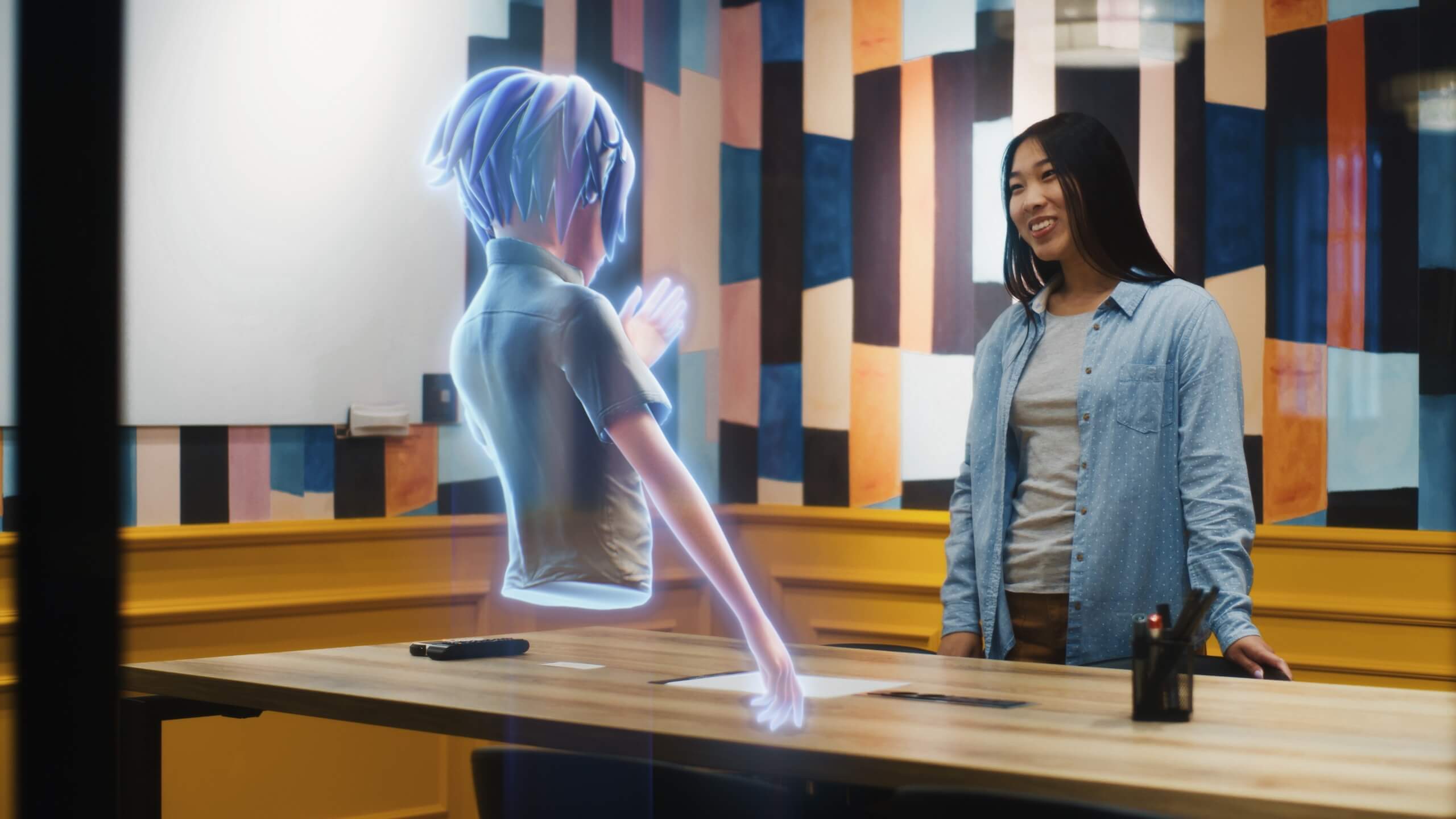Deviceless Extended Reality: Future Trend of Immersive Technology Without AR/VR Wearables
Extended Reality (XR) is intensifying the ways of modern communications. XR is a catchall term used to describe all immersive technology – virtual reality, augmented reality, and mixed reality – that combines real and virtual worlds through simulation or augmenting the existing world. Immersion is likely via smart devices (like phones, tablets, or projectors) and wearable devices (like VR headsets or smart glasses).
XR technology is still evolving along with several advancements being tested and made. The evolution in technology – from wired to wireless and portable devices – provided us with various opportunities to explore human-machine interfaces (HMI). “Looking to the future, the next big step will be for the very concept of the ‘device’ to fade away,” Google CEO Sundar Pichai wrote in the company’s blog.
Thus, having a future with Deviceless XR should come as no surprise. The term ‘deviceless’ possibly doesn’t mean interaction without using a device but instead an interaction without any physical interference. Before exploring “Deviceless” XR, let’s catch up with a clear view of each technological term:
What is Extended Reality (XR)?
Extended Reality is a universal term all-inclusive of Augmented Reality (AR), Virtual Reality (VR), Mixed Reality (MR), and their connotations. It is an extension of the human experience created by immersing users in a multisensory environment that is more engaging, interactive, and effective. Thus, enabling large-scale visualization and walk-through representation of any service. The application of XR is achieved either by immersing humans in a virtual environment (i.e., VR), overlaying virtual elements in the real world (i.e., AR), or both of these (i.e., MR). Hence, here come three main pillars of XR:
- Virtual Reality (VR):
Virtual reality gives 3-dimensional and computer-generated reality. This immersive technology uses VR headsets to create a whole new virtual world, providing users with a 360-degree view of the virtual world via using a pre-recorded video or full immersion (simulation). In this fully-simulated virtual environment, users can interact with digital objects and can move freely within.
- Augmented Reality (AR)
Augmented reality, on the contrary, adds virtual elements to a live, real-world environment through AR glasses, headsets, smartphones, smart lenses, and tablets. This technology overlays 2-D and even 3-D digital objects, images, videos, or texts on a real-world flat surface, such as a floor or table.
- Mixed Reality (MR)
A mixed reality experience is a combination of VR and AR elements, where physical and digital objects co-exist. This type of immersive technology uses advanced computing, graphics, and input systems that enable users to interact with both the virtual environment and the real-world concurrently. With mixed reality, users can direct their vision in a 360-degree environment and can watch videos and pictures, as well as interact with people and objects virtually. For instance, MR is used for the employee onboarding process, sales training, testing and implementation in manufacturing and warehouse, and several other tasks.
VR headsets – standalone and tethered – are popular choices in the gaming, art, and entertainment sectors. Another best XR device is portable and wearable AR glasses, which are used for smart shopping, educational training, and other tasks. But what about people who don’t want to wear glasses or headsets? Following the proliferation of XR technologies and today’s needs, now is the time for Deviceless XR.
In Microsoft’s Projectors and Depth Cameras for Deviceless Augmented Reality and Interaction, the research study focused on the use of multiple depth-sensing cameras, projectors, and touch-sensitive interactive displays that allowed users to interact with deployed 3D objects in a specified space (e.g., a room).
Microsoft also worked on “interactivity everywhere without the use of wearables or devices”. For instance, LightSpace uses depth-sensing cameras and projectors to allow users to interact with 3D objects by touching any surface rather than using a device. Spacee Inc. provides deviceless augmented reality for visual retail without using any helmets, glasses, or tablets/phones. These are examples of “spatial” and “deviceless” AR technology.
Microsoft’s Hand-Menu is an example of a “deviceless” interface that can be used instantly and placed independently. It displays small to large and complex UI controls over a flat open palm. It just requires users to blatantly gaze at their hands and interact with various UI elements easily and comfortably.
These are examples of attempts to develop and adopt “wireless” or/and “deviceless” technology. So-called projection mapping or projection-based augmented reality (PBAR) has been in use for over a decade, for e.g., HoloLamp is the 1st glasses-free and hands-free AR projector system. But, of course, we are looking into a future trend with holograms and spatial and not just 3D projections.
Deviceless Extended Reality: Beyond AR/VR Wearables
The developers of cloud-native applications are rapidly changing the underlying infrastructures. The improvements in AI, the ability of AI to self-replicate to counterattack false algorithms, the advent of 5G wireless networks, the shift to Metaverse – a universal virtual world, the increased application of VR and AR, and XR more widely, serve as a starting point for the emerging deviceless edge computing.
The serverless computing will enable Deviceless XR to function in an environment immediately and efficiently, without any data processing delay and high energy consumption issues. That said, XR is expected to replace all screens including tablets and TVs; not just the convergence of VR/AR wearables and devices into a single XR technology but a new era of deviceless XR experience is here to stay.

The XR industry is projected to increase from $43 billion in 2020 to $333 billion by 2025, as per a recent market forecast. “Deviceless XR”, “democratized AR”, or “spatial AR” are terms that describe the same future state, where extended reality can be experienced without any devices or wearables. This boundless growth could transform the way corps work, learn, train, and interact. Get ready to experience a whole new world via immersive technology in the next couple of years!



